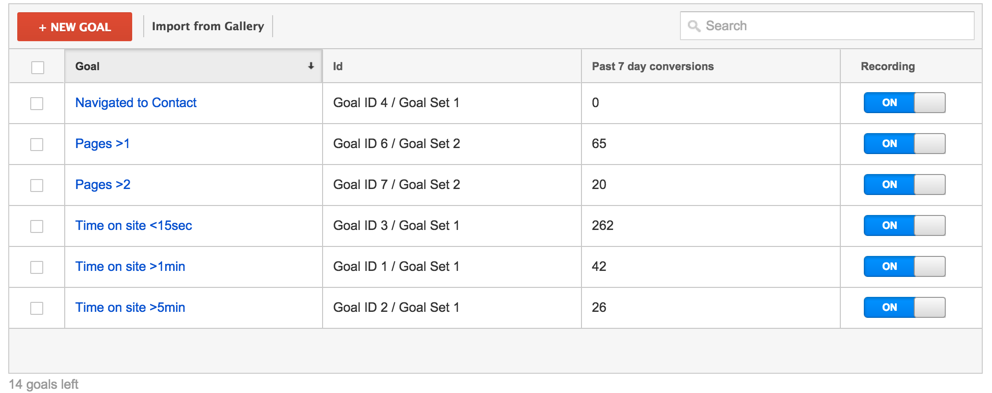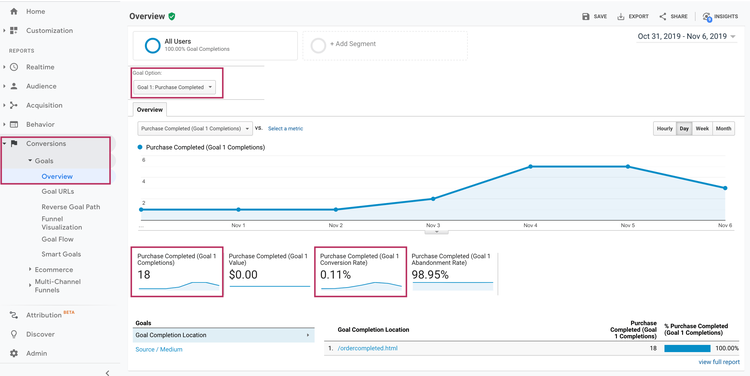What Data Is Google Analytics Goals Unable to Track: Essential Information
What Data Is Google Analytics Goals Unable to Track: Essential Information
Blog Article
Discover the Limitations of Google Analytics Goals: Introducing the Data Types That Remain Untrackable
As companies increasingly depend on data-driven decision-making, recognizing the restrictions of tools like Google Analytics comes to be paramount. While Google Analytics Goals offer valuable understandings right into customer interactions, there exist data types that avoid tracking, positioning obstacles to a comprehensive understanding of user actions.
Incomplete Customer Trip Tracking
Insufficient user journey tracking within Google Analytics can hinder the capacity to properly analyze user habits. When the customer trip is not totally tracked, there are spaces in the data that avoid a comprehensive understanding of just how individuals communicate with a website. This lack of insight can result in missed possibilities for optimization and renovations to the individual experience.
One usual problem with incomplete individual trip tracking is the lack of ability to see the full course that customers take in the past completing a goal or leaving the website. Without this information, it is challenging to recognize where individuals may be running into barriers or friction points that prevent them from converting. In addition, incomplete tracking can obscure the effect of specific advertising and marketing initiatives or web site modifications on customer habits.
To address this limitation, it is essential to establish correct tracking mechanisms within Google Analytics to record the whole individual trip. This may entail establishing event tracking, objective funnels, or utilizing devices like Google Tag Manager to ensure that no vital communications go unrecorded. By getting a detailed view of the customer trip, site proprietors can make more enlightened decisions to enhance individual involvement and drive conversions.
Acknowledgment Challenges
Browsing through attribution challenges in Google Analytics needs an extensive understanding of how various touchpoints add to the overall conversion process. Acknowledgment challenges emerge from the complexity of contemporary customer trips, where customers engage with several networks prior to converting. Google Analytics gives various attribution models like first touch, last touch, and direct, each supplying a various perspective on exactly how credit scores is designated to touchpoints along the conversion path. Nevertheless, these versions might not always precisely reflect the true impact of each touchpoint on the conversion.
One common attribution challenge is the trouble in attributing conversions to the correct source, especially in cases where individuals connect with multiple networks before converting. This can cause errors in identifying which advertising initiatives are driving one of the most conversions. Furthermore, cross-device tracking positions an additional acknowledgment difficulty, as users commonly change between tools during their trip, making it challenging to track their interactions seamlessly. Marketing professionals need to very carefully translate and examine acknowledgment data to make enlightened decisions and enhance their advertising methods properly.
Offline Conversions
Given the challenges connected with connecting conversions precisely in online channels, the measurement of offline conversions offers a significant chance for marketing professionals looking for a more extensive understanding of their clients' journey. Offline conversions describe activities that consumers absorb the physical world, such as making purchases in brick-and-mortar stores or over the phone, attending events, or engaging with published products - what data is google analytics goals unable to track. These conversions are critical for companies that operate both online and offline, as they supply valuable understandings right into the efficiency of advertising and marketing campaigns across different touchpoints
Tracking offline conversions commonly positioned a substantial difficulty for marketing professionals, as it was challenging to connect these activities back to particular on the internet communications accurately. With developments in technology, such as the combination of CRM systems, distinct identifiers, and voucher codes, organizations can now bridge the void in between online and offline data to gain a more holistic view of consumer actions. By properly gauging offline conversions, marketers can optimize their strategies, allocate resources a lot more effectively, and eventually improve the general client experience.
Cross-Device Tracking
Cross-device monitoring plays an important function in recognizing the interconnected nature of customers' digital communications across several tools. In today's omnichannel world, where customers flawlessly switch over between mobile phones, desktop computers, and navigate here tablets, tracking their habits throughout these tools is essential for online marketers to get a comprehensive view of their customer journey.

Furthermore, privacy problems and policies such as GDPR and CCPA have even more difficult cross-device monitoring. With customers requiring more informative post control over their data and enhanced constraints on monitoring modern technologies, marketing experts must discover cutting-edge and privacy-compliant ways to connect customer communications throughout tools.
Dynamic Web Content Engagement
Understanding individual involvement with vibrant web content is crucial in enhancing digital advertising methods for boosted target market communication. Dynamic material describes website components that transform based on individual habits, preferences, or other variables, providing a tailored experience. Nevertheless, tracking individual interactions with vibrant web content presents challenges for conventional analytics tools like Google Analytics.
While Google Analytics can track fundamental interactions like clicks and web page views, it might battle to capture even more nuanced interactions within vibrant web content. what data is google analytics goals unable to track. Metrics such as time invested on certain vibrant aspects, float actions, or communications within pop-ups are commonly not quickly quantifiable utilizing standard monitoring approaches. This constraint hinders marketing professionals' capability to totally understand just how individuals are engaging with vibrant content and tailor their strategies as necessary

Conclusion
Finally, Google Analytics objectives have restrictions in tracking incomplete individual trips, connecting conversions properly, capturing offline conversions, tracking cross-device interactions, and measuring dynamic web content engagement. These constraints highlight the value of discovering added tracking methods and tools to gain an extra comprehensive understanding of user behavior and conversions beyond what Google Analytics can give.
While Google Analytics Goals offer valuable insights right into individual communications, there exist information kinds that avoid tracking, positioning difficulties to a detailed understanding of customer web link actions.Insufficient customer trip tracking within Google Analytics can impede the capacity to precisely examine individual actions. When the individual trip is not fully tracked, there are gaps in the information that prevent an extensive understanding of how users engage with a web site.One usual issue with insufficient customer journey tracking is the lack of ability to see the complete path that customers take in the past finishing a goal or leaving the site. By obtaining a comprehensive sight of the individual journey, web site proprietors can make more educated decisions to enhance customer interaction and drive conversions.
Report this page